Restoring the Parthenon
Today, how to rebuild a ruin. The Honors College at the University of Houston presents this program about the machines that make our civilization run, and the people whose ingenuity created them.
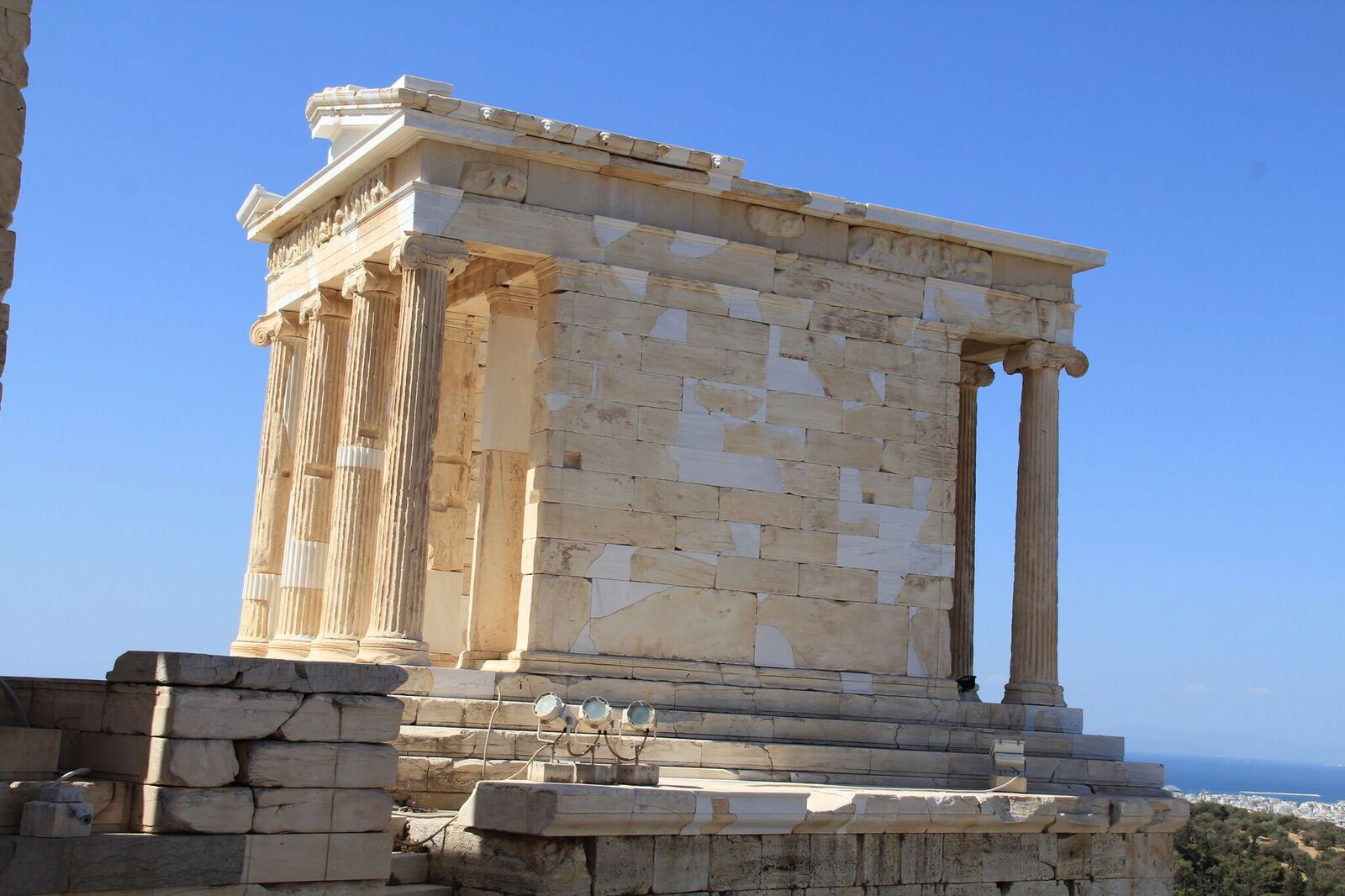
The Temple of Athena Nike, with visible supplements of new marble adjacent to the original marble. Photo Credit: Richard Armstrong.
In 1687, Venetian gunners blew up a powder magazine during the siege of a Turkish-held city. This wouldn't normally be a great historical event: only the city was Athens, and the place housing that gunpowder was the Parthenon, one of the most famous temples in ancient Greece. Unwittingly, the Venetians bequeathed to posterity a very complicated problem. How to restore the Parthenon? For over two thousand years, it had weathered wars, sieges, and earthquakes, not to mention conversion from temple to church to mosque; but their one lucky shot blew the great marble monument to pieces.
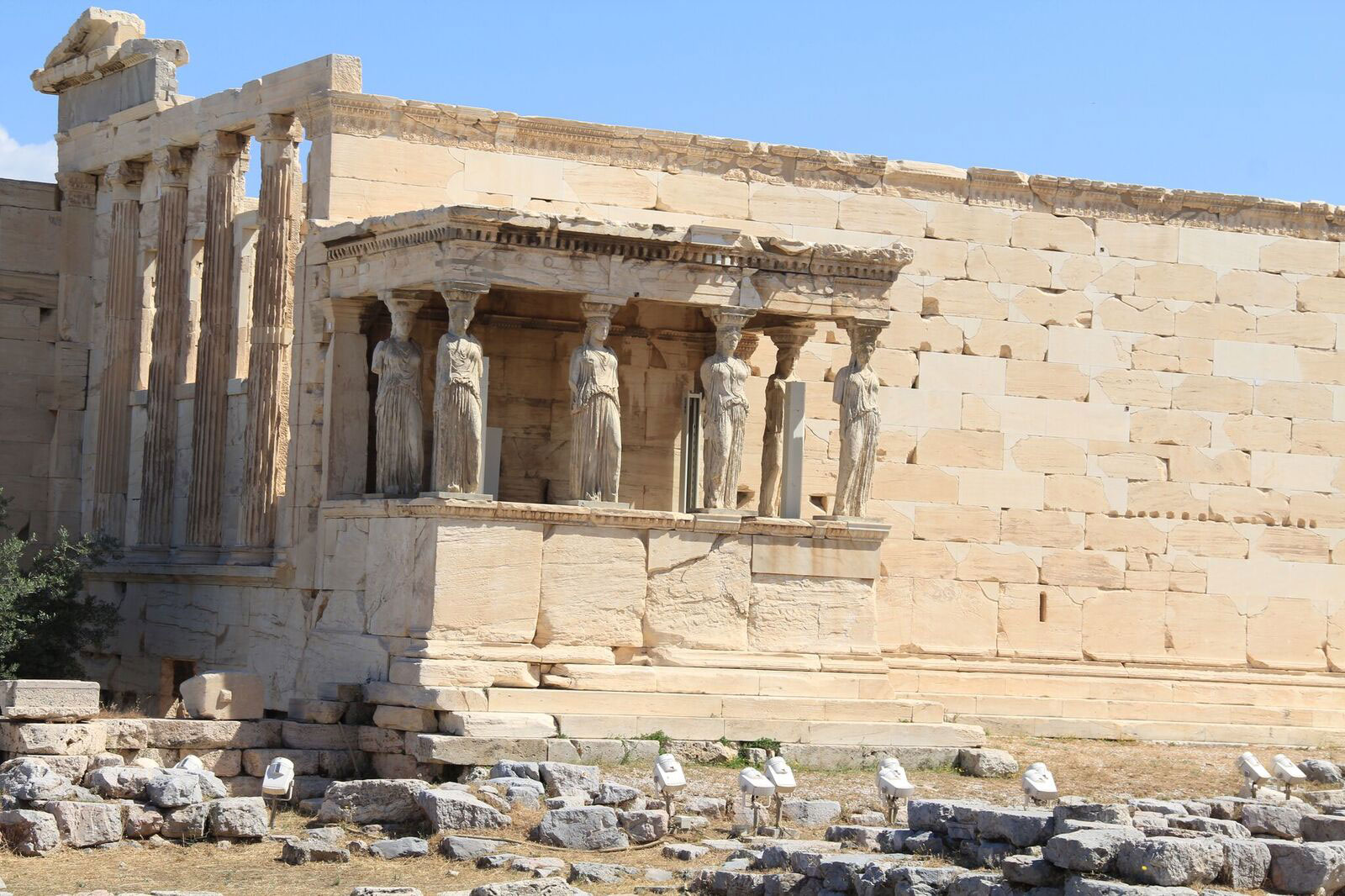
The Maiden Porch on the Erechtheum, also with visible supplements of new marble. Photo Credit: Richard Armstrong.
The first phase of the Parthenon's restoration goes back to the 19th century, when the whole Acropolis was finally converted from a living urban space to a classical ruin. In medieval and Ottoman times, the Acropolis still functioned as a stronghold for local overlords. In fact, it was the site of two desperate battles during the Greek Revolution. But with the establishment of the modern Greek State in the 1830s, Athens became its new capital. So what purpose would the Acropolis serve now? While one architect toyed with the idea of putting a royal palace up there for the new King of Greece, the archaeologists won the debate in the end. The Acropolis had to be dismantled and rebuilt into a noble ruin, the faded image of the Athens of Pericles and Socrates.
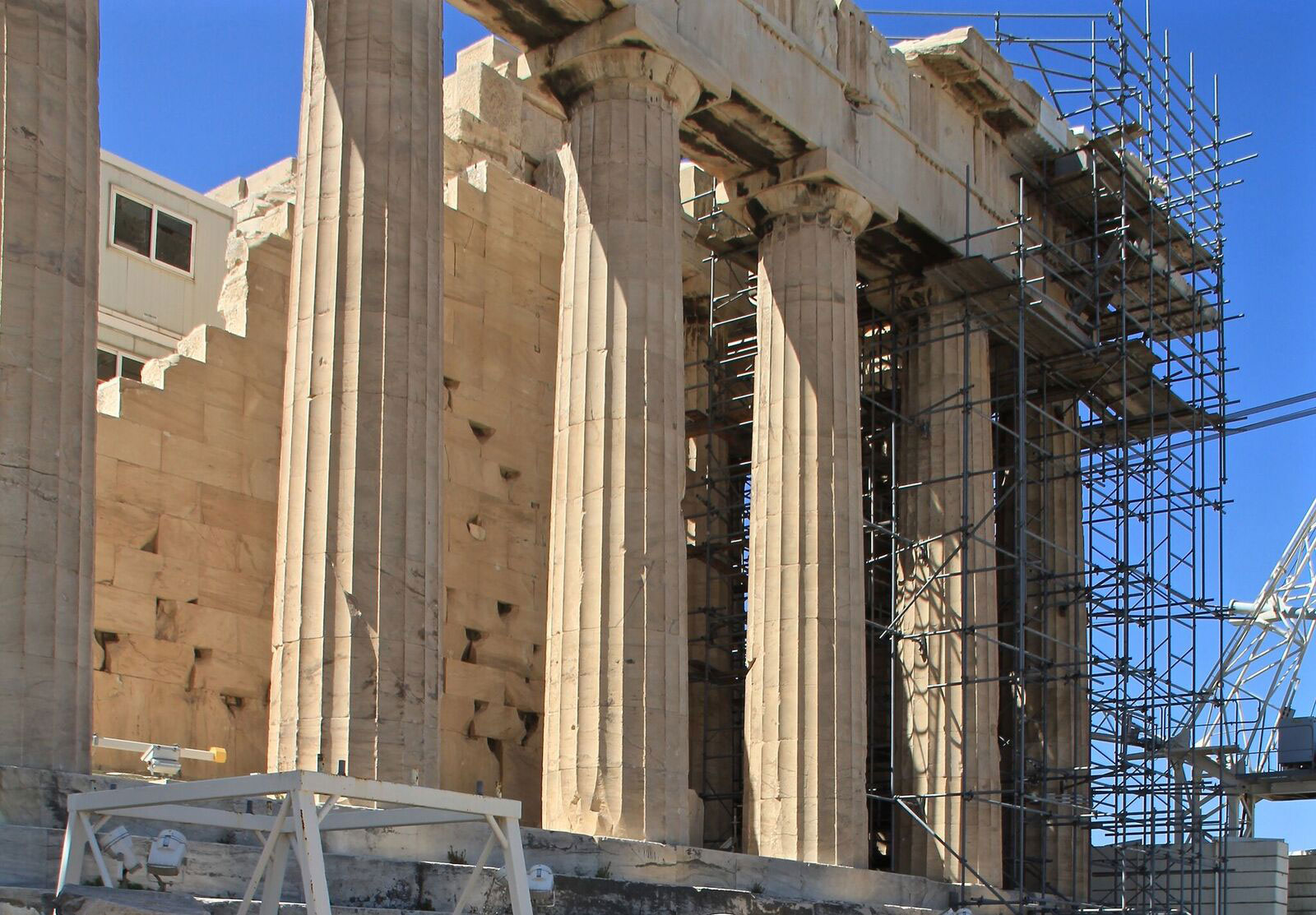
Restoration work on the NW corner of the Parthenon. Photo Credit: Richard Armstrong.
Lots of structures got removed'like the prominent tower the crusaders had built, and the little mosque tucked inside the ruined Parthenon by the Turks. The temple of Athena Nike was completely rebuilt from its scattered materials, and the Erechtheum, with its columns shaped like female figures, was liberated from its conversion into a Turkish harem. But the Parthenon remained a problem: it was shattered and unstable. Initial attempts to restore it proved themselves to be quite damaging over time. The wrong cements were used, and new iron clamps proved disastrous: they'd rust and expand, splitting the marble they were supposed to preserve. Then air pollution and human traffic did more damage, and the situation became critical.
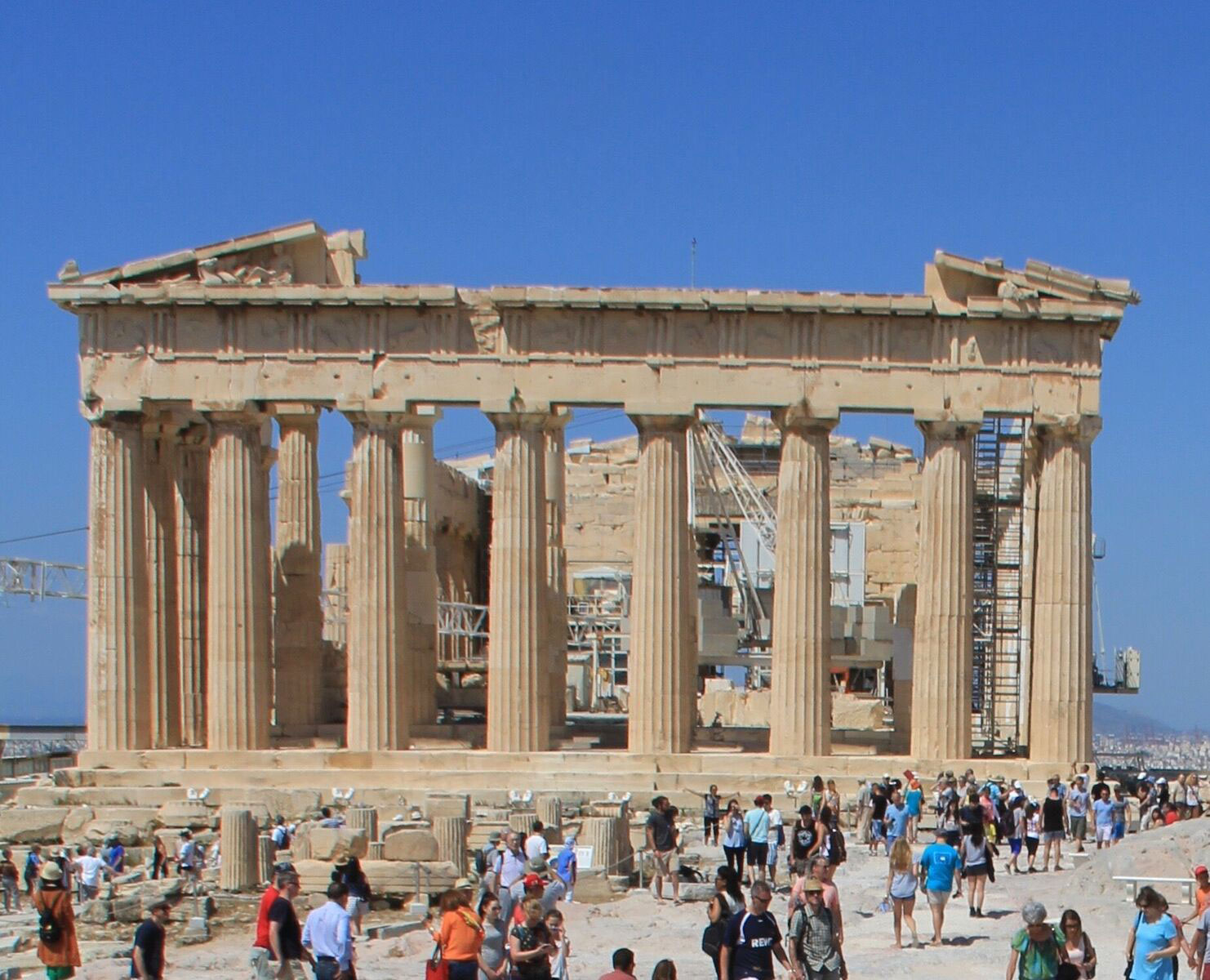
The Eastern Facade of the Parthenon, with the construction crane hidden inside. Photo Credit: Richard Armstrong.
Since 1975, a major restoration project has been working away at undoing the damage. Teams of archaeologists, architects, and engineers use a mixture of ancient and modern techniques to locate and restore its many pieces, and to supplement them when possible. The materials to aid the restoration are near at hand, since the same quarries used in Pericles' time are still productive today. Master craftsmen from the island of Tinos work the marble using traditional techniques appropriate to the site. Now whole columns can rise up again, with fresh marble helping to keep the ancient pieces standing.
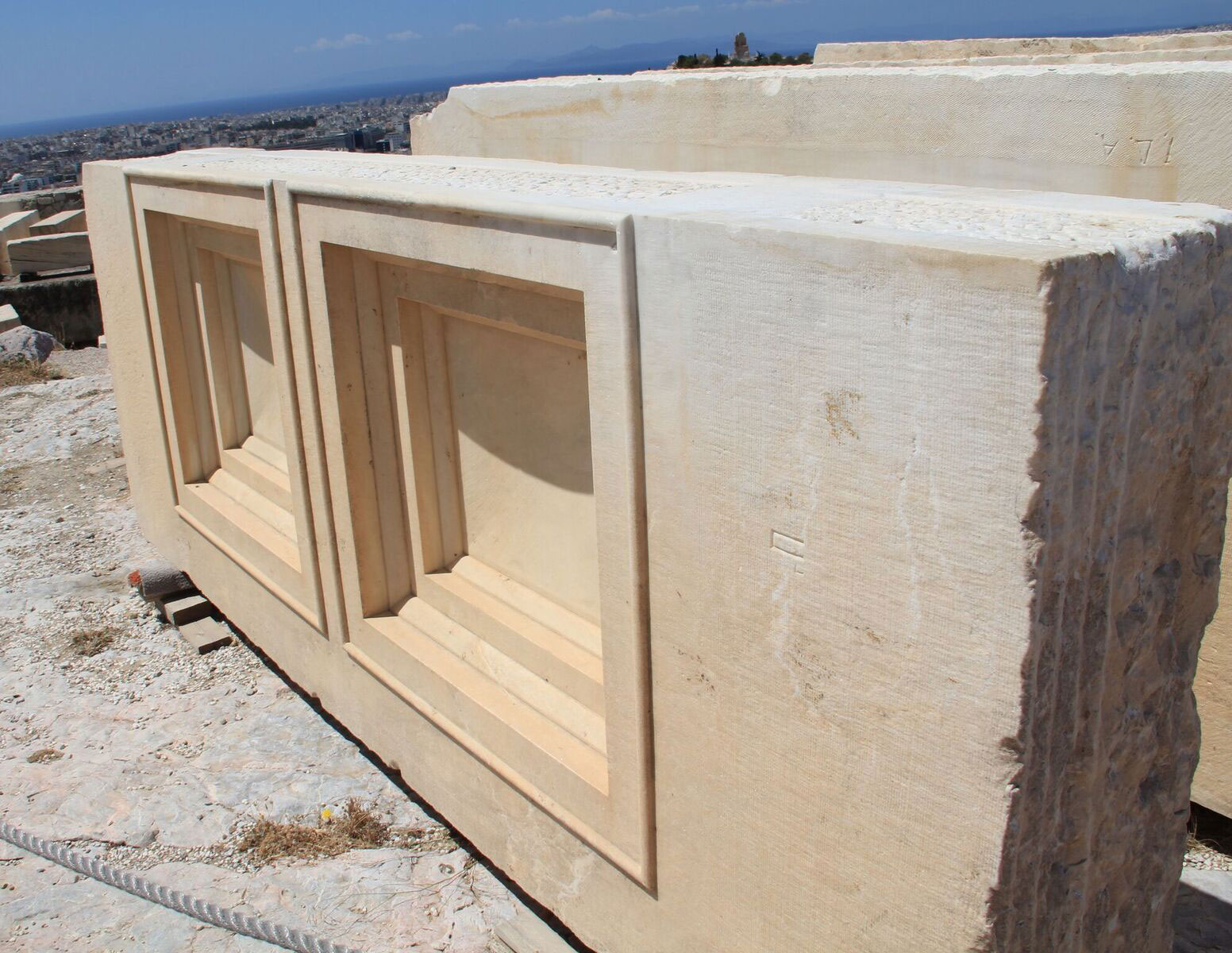
Newly quarried pieces awaiting placement in the Parthenon. Photo Credit: Richard Armstrong.
But how long will the restoration go on? It took the ancients only 8 or 9 years to build the Parthenon, but over 40 years have passed and the restoration is far from its goal. And that goal is still just to make it a venerable ruin, not a full restoration of the original. But that's okay; we Americans already have one of those. You can go see it for yourself in Nashville, Tennessee.
I'm Richard Armstrong at the University of Houston, where we're interested in the way inventive minds work.
(Theme music)
Lobell, Jarret A. 2015. 'The Acropolis of Athens: The Decades-long Project to Restore the Site to its Iconic Past.' Archaeology October 7, 2015. Available online: http://www.archaeology.org/issues/193-1511/features/3765-athens-acropolis-restoration-project
Website of the official Acropolis Restoration Service (YSMA), http://www.ysma.gr/en/
An example of the Restoration Service's work can be seen in this video (in Greek with English subtitle): https://www.youtube.com/watch?v=uFJz2odV9jU#t=480.908579747
Bast'a, Eleni. 2000. The Creation of Modern Athens: Planning the Myth. Cambridge, Cambridge UP.
Hurwit, Jeffrey M. 2004. The Acropolis in the Age of Pericles. Cambridge, Cambridge UP.
Korres, Manolis. 2000. The Stones of the Parthenon. Los Angeles, Getty Museum. [A delightful short book tracing the production of a single piece of a massive column from its quarrying to its placement on the Acropolis, written by the genius scholar behind the Acropolis restoration project.]
For the Nashville Parthenon, see: https://en.wikipedia.org/wiki/Parthenon_(Nashville)
This episode was first aired on July 26, 2016